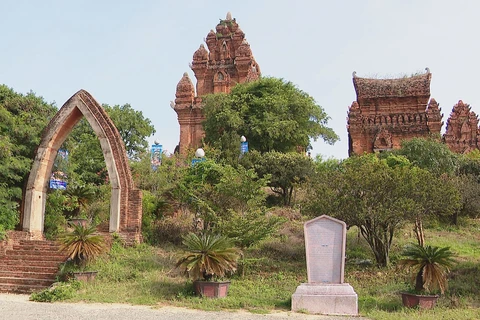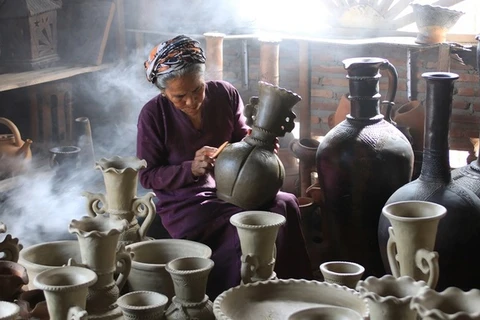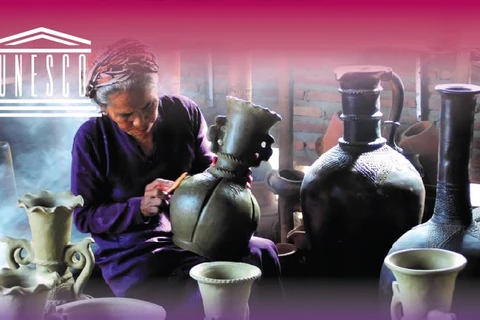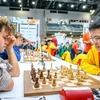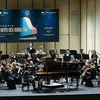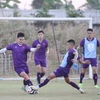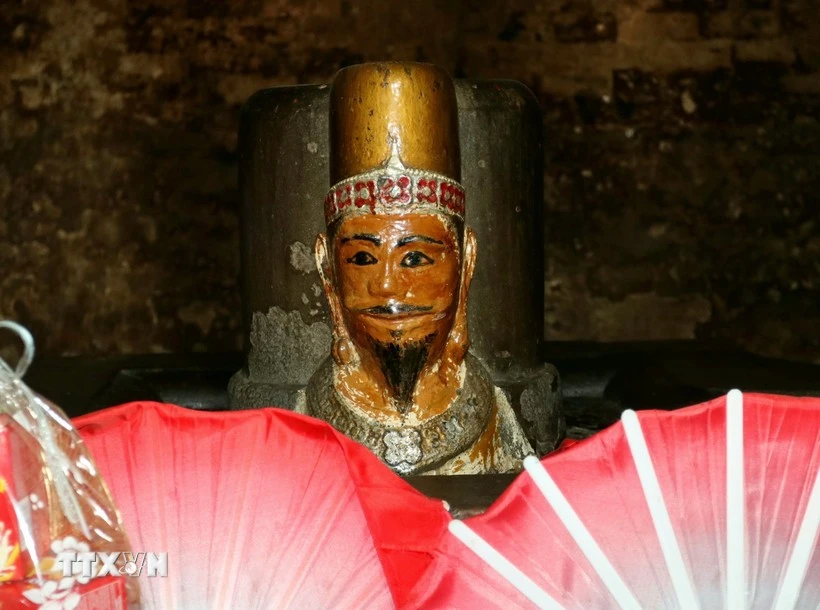
Ninh Thuan (VNA) - Ninh Thuan province currently has four artifacts recognised as national treasures, including Hoa Lai Stele, Relief of King Po Rome, Phuoc Thien Stele and Statue of King Po Klong Garai.
Located in the central coastal region, Ninh Thuan is a land that preserves the "golden" marks of the Cham culture, with a system of ancient temples and towers, unique traditional festivals and customs.
Prominent among them are artifacts recognised as national treasures, attracting tourists to enjoy and explore. Ninh Thuan province has four artifacts recognised as national treasures, including Hoa Lai Stele, Relief of King Po Rome, Phuoc Thien Stele and Statue of King Po Klong Garai.
1. Hoa Lai Stele
Hoa Lai Stele was discovered during the archaeological dig of the Hoa Lai tower renovation project. The stele dates back quite early, around the late 8th and early 9th centuries, and is currently kept at the Ninh Thuan Provincial Museum.

The stele is still quite intact, engraved on three sides with Sanskrit characters. The recorded content is the basis for considering the history of building towers in Hoa Lai, dynastic history, and history of religious beliefs in the Panduranga region during the Hoan Vuong period.
The Hoa Lai Stele is a unique original artifact with special value in terms of cultural history, artistic architecture and typical sculpture of the Cham culture that flourished from the 2nd century to the 17th century in the region that is Central Vietnam today.
The Hoa Lai Stele was recognised as a national treasure by the Prime Minister in Decision No. 2283/QD-TTg on December 31, 2020.
2. Relief of King Po Rome
The relief of King Po Rome dates back to the 17th century. It is a unique original artifact of special value, and is currently kept at the Po Rome tower relic in Phuoc Huu commune, Ninh Phuoc district, Ninh Thuan province.
As a rare ancient work of art, the relief of King Po Rome was carved with a bust, occupying the entire bottom and middle of the stone stele. It was chiseled and carved on the eroded rock surface by the hands of ancient Cham artisans, marking a period of the final prosperity of the Champa Kingdom. This is one of the ancient kingdoms that existed in the territory of Vietnam today, associated with the career of the last king of the Cham people.
The relief represents the religious and belief characteristics, social culture, as well as the sculptural art of the Panduranga land during a period of high development that lasted for many centuries.
This is a unique sculptural work of art imbued with the characteristics and style of the Champa culture in the final stages that influenced contemporary monuments and works of art.
The relief of King Po Rome was recognised as a national treasure by the Prime Minister in his Decision No. 2283/QD-TTg on December 31, 2020.
3. Phuoc Thien Stele
Phuoc Thien Stele was discovered in 1992 in a field in Phuoc Thien village, Phuoc Son commune, Ninh Phuoc district, Ninh Thuan province.
The stele dates back to the late 8th and early 9th centuries and are currently kept at the Ninh Thuan Provincial Museum.
On both sides of the stele were engraved Sanskrit characters. The Phuoc Thien Stele holds historical significance, marking a period of prosperous development of the Champa Kingdom at that time - the reign of King Satyavarman.
The inscriptions suggest the date of construction of the temple tower in this area, carrying the value of dynastic history, history of religion and belief, as well as the history of inscriptional techniques of the Panduranga land during its high development period.
This is a unique sculptural work of art imbued with the unique cultural characteristics of the Cham people and is a rare ancient text. It is a literary work reflecting socio-economic life, talent and merit of the kings at that time, demonstrating the typical humanistic and aesthetic values of the Cham culture.
The Phuoc Thien Stele was recognised as a national treasure by the Prime Minister in Decision No. 73/QD-TTg on January 18, 2024.
4. Statue of King Po Klong Garai
The worshipped statue of King Po Klong Garai dates back to the 16th and 17th centuries. It is currently venerated at Po Klong Garai tower in Do Vinh ward, Phan Rang-Thap Cham city, Ninh Thuan province.
The statue of King Po Klong Garai is a rare ancient sculpture, representing a very special image of the God-King in ancient Champa art.
The statue was crafted into a semi-circular relief floating on a circular stone pillar, carefully and skillfully chiseled and carved on stone material, demonstrating high aesthetics, exquisite workmanship and is also very unique in appearance. The image of Mukhalinga does not have the head of Shiva, but instead has a statue of the king attached to the Linga - an abstract image of a supreme god, Shiva, symbolizing destruction, mystery, power and immortality along with the image of a majestic king full of creativity in running the country and taking care of the happiness of all people.
It is a unique style combination between Indian religious spirit and indigenous religious thinking, expressing unified kingship and theocracy.
The statue of King Po Klong Garai was recognised as a national treasure by the Prime Minister in Decision No. 73/QD-TTg on January 18, 2024./.
